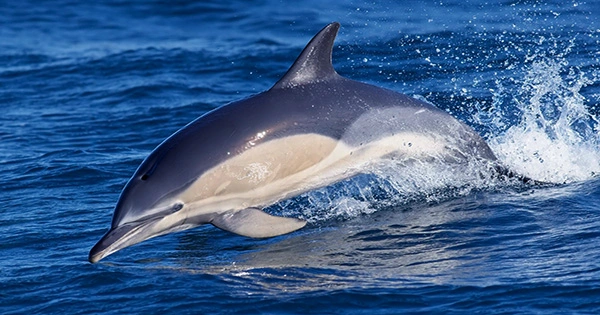How close are your buddies to you? Most of us could definitely recognize our friends by sight or sound, and if you’re really close, you might even be able to smell them out – but that’s about it. Right? It turns out that if you’re a dolphin, you don’t have to. According to a research published this week in the journal Science Advances, the marine animals recognize friends and family in an even more personal way: by tasting them.
Taste their pee, specifically. Professor Vincent Janik, Director of the Scottish Oceans Institute and principal author of the study, stated, “Dolphins studied urine samples for longer whether they originated from recognized animals or when they were provided simultaneously with the dolphin’s unique and unmistakable trademark whistle.”
At three sites in Bermuda and Hawaii, he and colleagues Jason Bruck and Sam Walmsley exposed bottlenose dolphins with varied pees from their buddies to observe how they reacted, which is honestly the type of stuff that gets non-scientists barred from the premises. “This hints to a comprehensive picture of familiar creatures in a dolphin’s brain,” he said, “Not just that they can discern animals apart by taste, but also that they recognize species across their senses.”
To be honest, “taste” is a bit of a misnomer; dolphins don’t have much of a sense of taste. They don’t have a sense of smell since they lack an olfactory bulb, an immature olfactory nerve, and a nose that is completely separate from their mouth and esophagus — and as anybody who has just had a bad cold knows, everything tastes like cardboard. Dolphins, on the other hand, are unlikely to recognize an individually different composition of components in conspecifics’ urine using basic mammalian taste sensors, according to the paper, “because they experienced a loss of taste receptor genes responsible for the perception of four of the five basic tastes in mammals.”
Instead, the cetaceans are using “unique sensory cells on their tongue that are undoubtedly engaged in this recognition of individual tastes of other species,” according to Janik. The research says that dolphins may perceive taste “via the facial or trigeminal nerves despite the lack of the olfactory and vomeronasal cranial nerves” due to the predominance of particular brain regions connected with chemoreception through taste. From a human viewpoint, tasting your friends’ pee might seem a little too nice – but to a dolphin, it makes perfect sense, according to the authors.
“In the open ocean, the use of taste is particularly useful since pee plumes will stay for a long time after an animal has departed,” they explain. “Dolphins would be alerted to the recent presence of that individual by identifying who generated a plume, even if it had not communicated its presence verbally.” “Genital inspection in which there is rostrum [beak] to genital touch is very common in dolphin social interactions,” the report says, “and gives an excellent chance to acquire the taste of a conspecific’s urine.”
The results provide further additional proof of dolphins’ big-brained mental power, despite the fact that the technique is unique. Dolphins have been known to recall each other’s “names” for more than 20 years, and experts believe that this newly revealed ability may allow the creatures to check on their friends’ physical and mental well-being.
“Given the identification skills exhibited in our investigation, we believe dolphins can extract other information from urine, such as reproductive condition, or employ pheromones to affect one other’s behavior,” the article concludes. “Our findings, when combined with […] past research, reveal that dolphins create permanent modality-independent representations with learnt labels, much as humans do,” the authors conclude. “The resulting conspecific notions might be employed in mental processes like planning, mental time travel, or social scenario modeling.”















